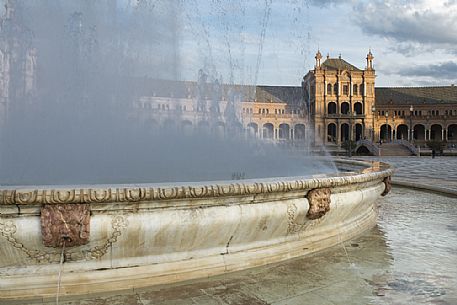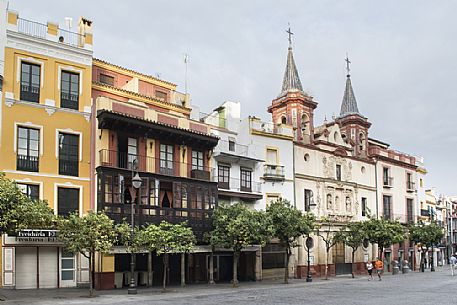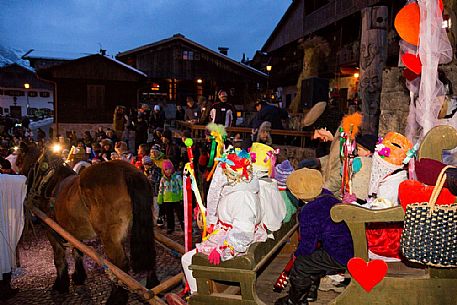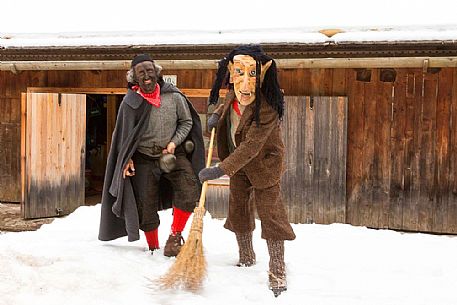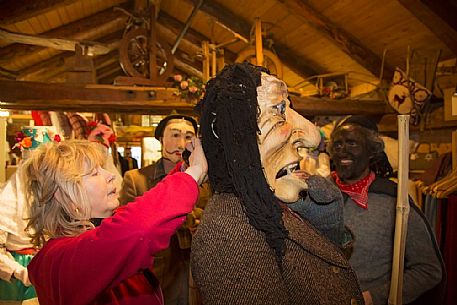Please Sign in or Register now to manage lightbox and cart
Lightboxes - How to use them
A Lightbox is a virtual table where you can collect and view images of interest.
Collect the files you like from any search results page or file close-up page by clicking the 'Add to your Lightbox' icon.
To open and view your selection, click the Lightbox link on the top navigation menu. You can have more than one lightbox if you're working on different projects.
You can email a Lightbox to friends and colleagues for review and discussion before purchase; they will receive an email with a link to the Lightbox that you created.
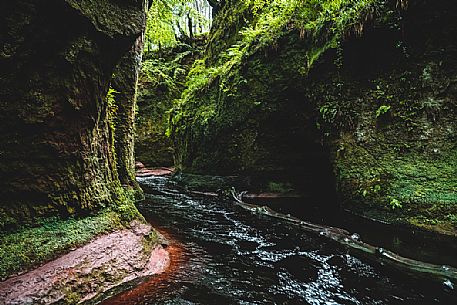
photographer: Roberto Cassa
Devils Pulpit is a gorge located a few miles from Glasgow, Scotland, United Kingdom, Europe
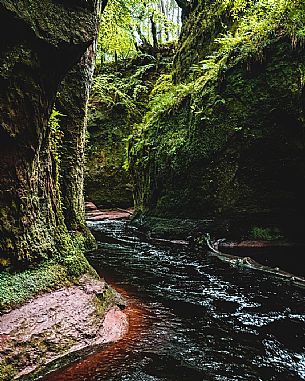
photographer: Roberto Cassa
Devils Pulpit is a gorge located a few miles from Glasgow, Scotland, United Kingdom, Europe
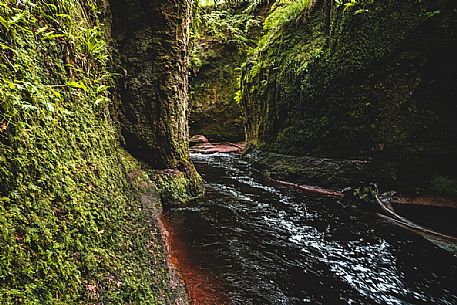
photographer: Roberto Cassa
Devils Pulpit is a gorge located a few miles from Glasgow, Scotland, United Kingdom, Europe
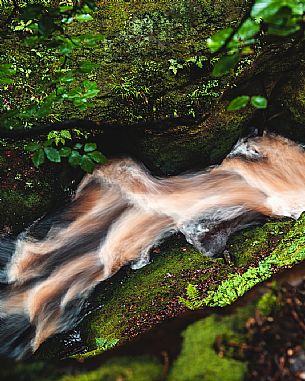
photographer: Roberto Cassa
Long exposure of the river near the Devils Pulpit, a gorge located a few miles from Glasgow, Scotland, United Kingdom, Europe
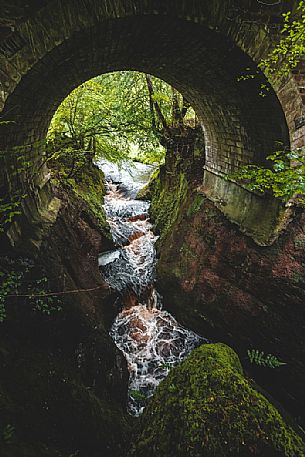
photographer: Roberto Cassa
The Devils Pulpit is a gorge located a few miles from Glasgow, Scotland, United Kingdom, Europe
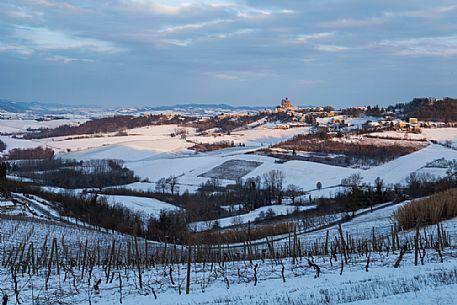
photographer: Marco Coppo
Snowy village of Treville Monferrato, one of the highest point in Monferrato, Piedmont, Italy, Europe
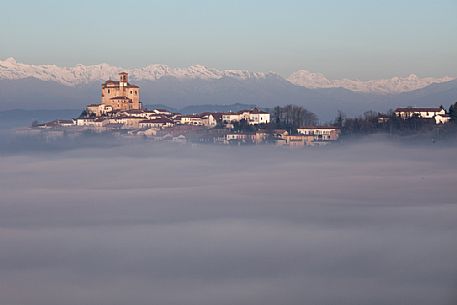
photographer: Marco Coppo
The church of Treville, one of the highest place in Monferrato, in the fog. On the background the Alps, Monferrato, Piedmont, Italy, Europe
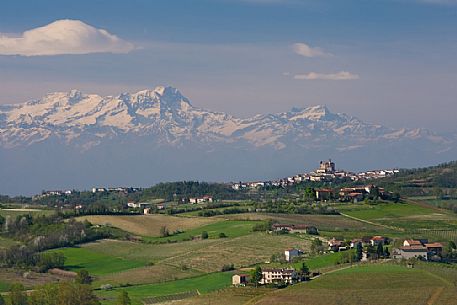
photographer: Marco Coppo
The church and the village of Treville and the Monte Rosa mountain range in the background, Monferrato, Piedmont, Italy, Europe
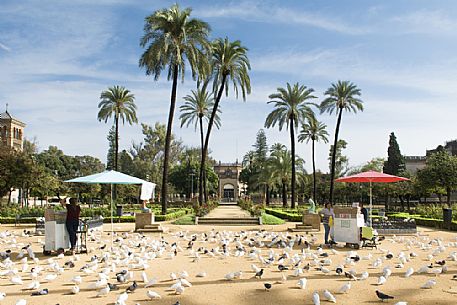
photographer: Fabio Gervasoni
The Plaza de America, located in the Parque de María Luisa, Seville, Spain
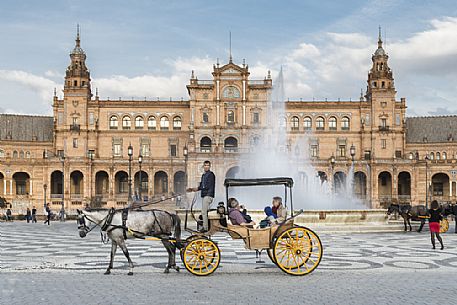
photographer: Fabio Gervasoni
Horse carriage in the center of Plaza de Espana, Seville, Spain
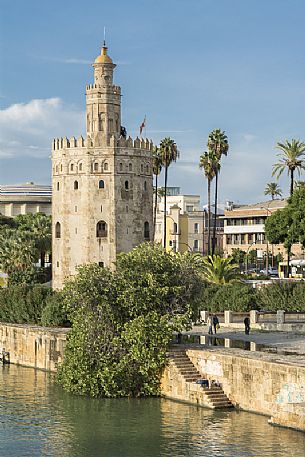
photographer: Fabio Gervasoni
Torre del Oro or tower of gold, along the Guadalquivir river, Seville, Spain
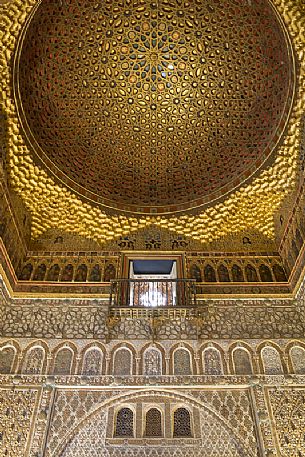
photographer: Fabio Gervasoni
Golden dome of Ambassador room in the Royal Alcazar Palace, Seville, Spain
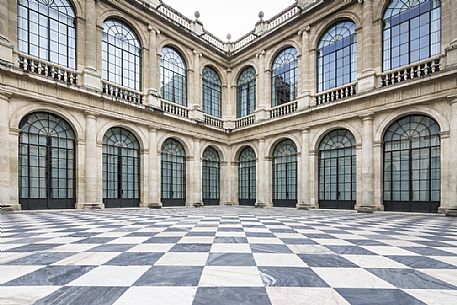
photographer: Fabio Gervasoni
Main courtyard of the general Archive of the Indies, UNESCO world heritage site, Seville, Spain
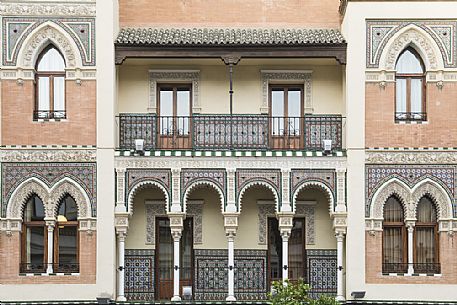
photographer: Fabio Gervasoni
Typical Andalusian architecture in Seville, Andalusia, Spain
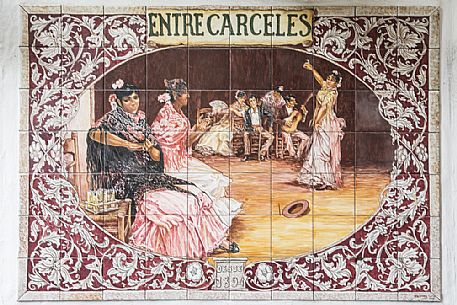
photographer: Fabio Gervasoni
Typical ceramic tiles displaying flamenco dancers, Andalusia, Spain
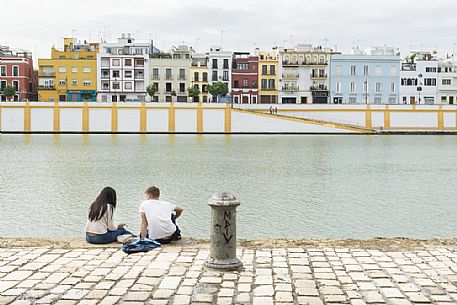
photographer: Fabio Gervasoni
People sitting along the bank of the river Guadalquivir with Triana quarter in the background, Seville, Spain
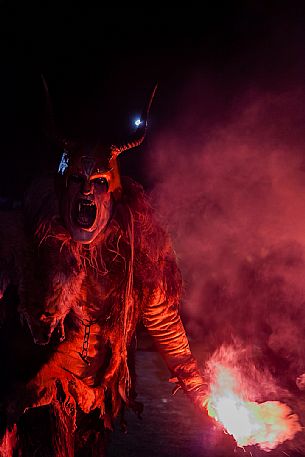
photographer: Maria Fancello
Krampus are horned, antropomorphic folklore figures companions of Saint Nicholas. You can meet them on the 5th or 6th December in regions including Austria, Bavaria, Croatia, Hungary, Slovenia and Northern Italy. This photo was taken in Tarvisio, Friuli Venezia Giulia, Italy
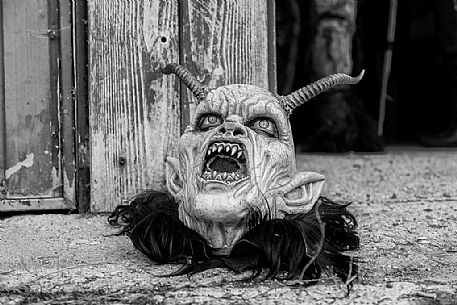
photographer: Maria Fancello
Krampus are horned, antropomorphic folklore figures companions of Saint Nicholas. You can meet them on the 5th or 6th December in regions including Austria, Bavaria, Croatia, Hungary, Slovenia and Northern Italy. This photo was taken in Tarvisio, Friuli Venezia Giulia, Italy
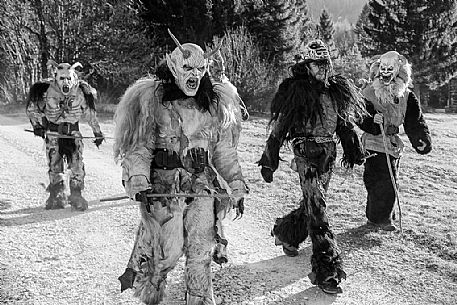
photographer: Maria Fancello
Krampus are horned, antropomorphic folklore figures companions of Saint Nicholas. You can meet them on the 5th or 6th December in regions including Austria, Bavaria, Croatia, Hungary, Slovenia and Northern Italy. This photo was taken in Tarvisio, Friuli Venezia Giulia, Italy
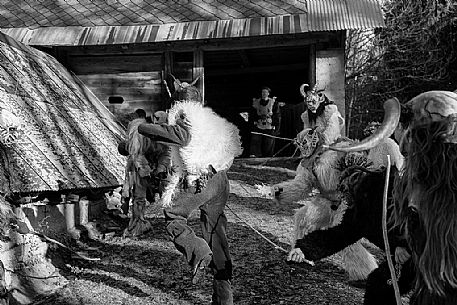
photographer: Maria Fancello
Krampus are horned, antropomorphic folklore figures companions of Saint Nicholas. You can meet them on the 5th or 6th December in regions including Austria, Bavaria, Croatia, Hungary, Slovenia and Northern Italy. This photo was taken in Tarvisio, Friuli Venezia Giulia, Italy
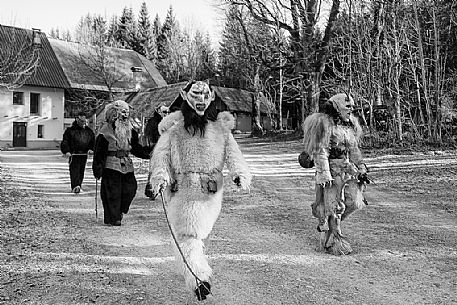
photographer: Maria Fancello
Krampus are horned, antropomorphic folklore figures companions of Saint Nicholas. You can meet them on the 5th or 6th December in regions including Austria, Bavaria, Croatia, Hungary, Slovenia and Northern Italy. This photo was taken in Tarvisio, Friuli Venezia Giulia, Italy
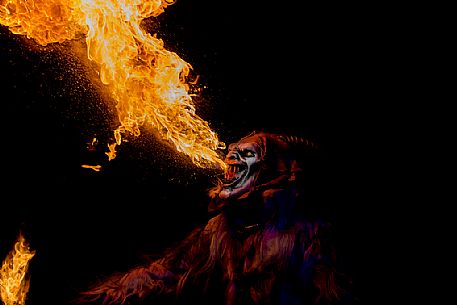
photographer: Maria Fancello
Krampus are horned, antropomorphic folklore figures companions of Saint Nicholas. You can meet them on the 5th or 6th December in regions including Austria, Bavaria, Croatia, Hungary, Slovenia and Northern Italy. This photo was taken in Tarvisio, Friuli Venezia Giulia, Italy
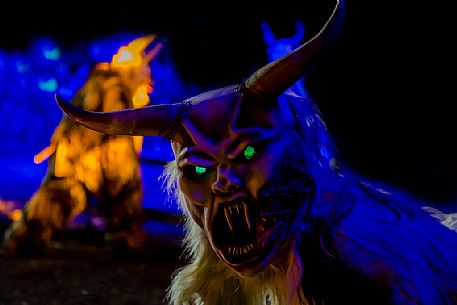
photographer: Maria Fancello
Krampus are horned, antropomorphic folklore figures companions of Saint Nicholas. You can meet them on the 5th or 6th December in regions including Austria, Bavaria, Croatia, Hungary, Slovenia and Northern Italy. This photo was taken in Tarvisio, Friuli Venezia Giulia, Italy
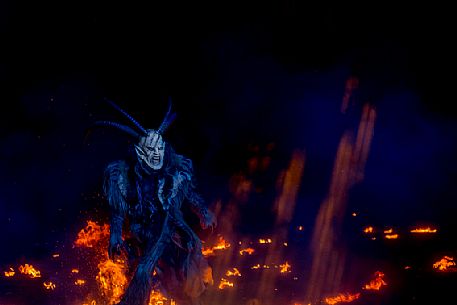
photographer: Maria Fancello
Krampus are horned, antropomorphic folklore figures companions of Saint Nicholas. You can meet them on the 5th or 6th December in regions including Austria, Bavaria, Croatia, Hungary, Slovenia and Northern Italy. This photo was taken in Tarvisio, Friuli Venezia Giulia, Italy
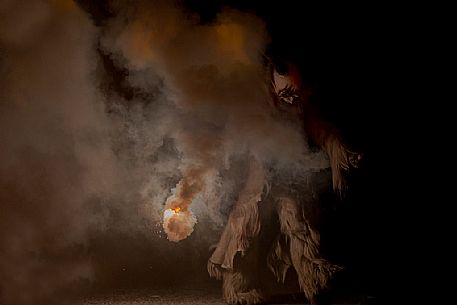
photographer: Maria Fancello
Krampus are horned, antropomorphic folklore figures companions of Saint Nicholas. You can meet them on the 5th or 6th December in regions including Austria, Bavaria, Croatia, Hungary, Slovenia and Northern Italy. This photo was taken in Tarvisio, Friuli Venezia Giulia, Italy
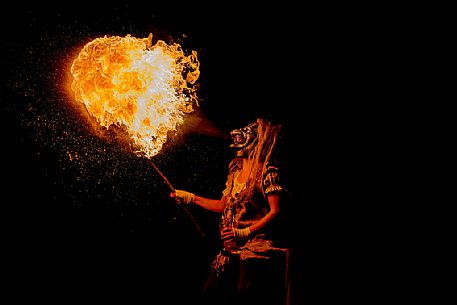
photographer: Maria Fancello
Krampus are horned, antropomorphic folklore figures companions of Saint Nicholas. You can meet them on the 5th or 6th December in regions including Austria, Bavaria, Croatia, Hungary, Slovenia and Northern Italy. This photo was taken in Tarvisio, Friuli Venezia Giulia, Italy
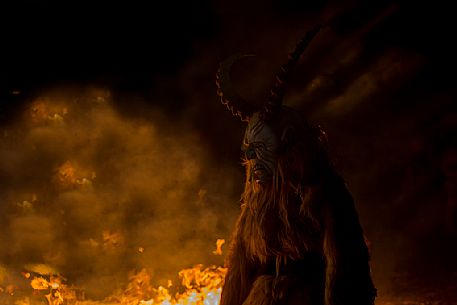
photographer: Maria Fancello
Krampus are horned, antropomorphic folklore figures companions of Saint Nicholas. You can meet them on the 5th or 6th December in regions including Austria, Bavaria, Croatia, Hungary, Slovenia and Northern Italy. This photo was taken in Tarvisio, Friuli Venezia Giulia, Italy
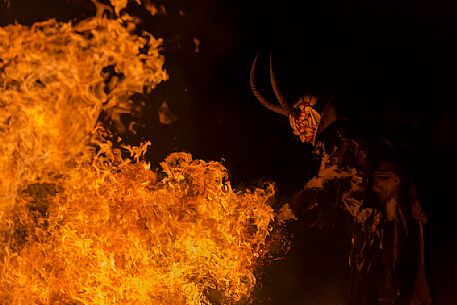
photographer: Maria Fancello
Krampus are horned, antropomorphic folklore figures companions of Saint Nicholas. You can meet them on the 5th or 6th December in regions including Austria, Bavaria, Croatia, Hungary, Slovenia and Northern Italy. This photo was taken in Tarvisio, Friuli Venezia Giulia, Italy
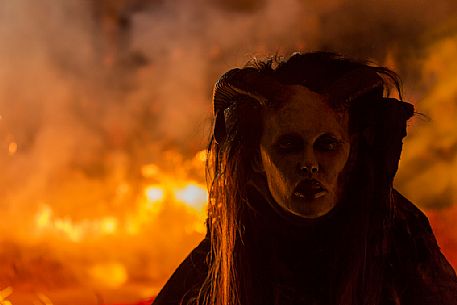
photographer: Maria Fancello
Krampus are horned, antropomorphic folklore figures companions of Saint Nicholas. You can meet them on the 5th or 6th December in regions including Austria, Bavaria, Croatia, Hungary, Slovenia and Northern Italy. This photo was taken in Tarvisio, Friuli Venezia Giulia, Italy
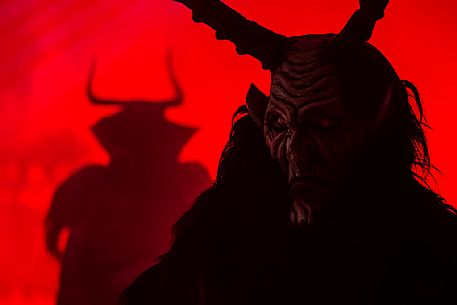
photographer: Maria Fancello
Krampus are horned, antropomorphic folklore figures companions of Saint Nicholas. You can meet them on the 5th or 6th December in regions including Austria, Bavaria, Croatia, Hungary, Slovenia and Northern Italy. This photo was taken in Tarvisio, Friuli Venezia Giulia, Italy
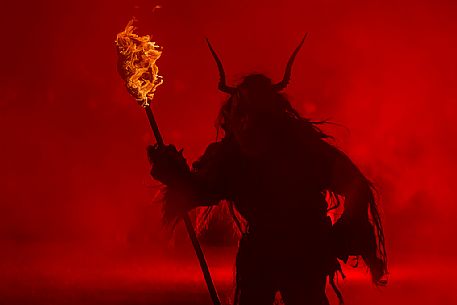
photographer: Maria Fancello
Krampus are horned, antropomorphic folklore figures companions of Saint Nicholas. You can meet them on the 5th or 6th December in regions including Austria, Bavaria, Croatia, Hungary, Slovenia and Northern Italy. This photo was taken in Tarvisio, Friuli Venezia Giulia, Italy
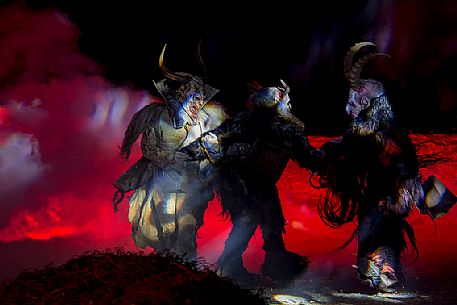
photographer: Maria Fancello
Krampus are horned, antropomorphic folklore figures companions of Saint Nicholas. You can meet them on the 5th or 6th December in regions including Austria, Bavaria, Croatia, Hungary, Slovenia and Northern Italy. This photo was taken in Tarvisio, Friuli Venezia Giulia, Italy
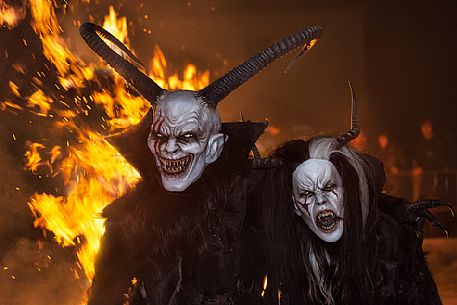
photographer: Anne Maenurm
Bad Santa, meet Krampus: a half-goat, half-demon, horrific beast who literally beats people into being nice and not naughty. Krampus, whose name is derived from the German word krampen, meaning claw, is said to be the son of Hel in Norse mythology. The legendary beast also shares characteristics with other scary, demonic creatures in Greek mythology, including satyrs and fauns, Tarvisio, Italy
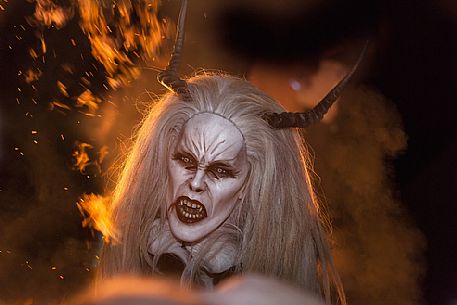
photographer: Anne Maenurm
Bad Santa, meet Krampus: a half-goat, half-demon, horrific beast who literally beats people into being nice and not naughty. Krampus, whose name is derived from the German word krampen, meaning claw, is said to be the son of Hel in Norse mythology. The legendary beast also shares characteristics with other scary, demonic creatures in Greek mythology, including satyrs and fauns, Tarvisio, Italy
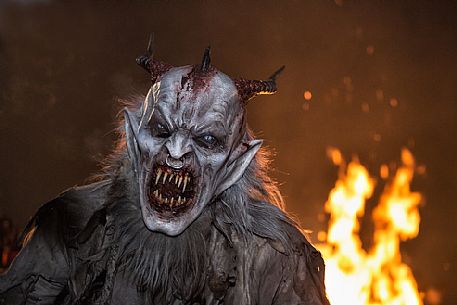
photographer: Anne Maenurm
Bad Santa, meet Krampus: a half-goat, half-demon, horrific beast who literally beats people into being nice and not naughty. Krampus, whose name is derived from the German word krampen, meaning claw, is said to be the son of Hel in Norse mythology. The legendary beast also shares characteristics with other scary, demonic creatures in Greek mythology, including satyrs and fauns, Tarvisio, Italy
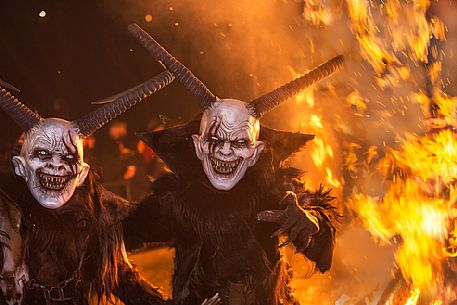
photographer: Anne Maenurm
Bad Santa, meet Krampus: a half-goat, half-demon, horrific beast who literally beats people into being nice and not naughty. Krampus, whose name is derived from the German word krampen, meaning claw, is said to be the son of Hel in Norse mythology. The legendary beast also shares characteristics with other scary, demonic creatures in Greek mythology, including satyrs and fauns, Tarvisio, Italy
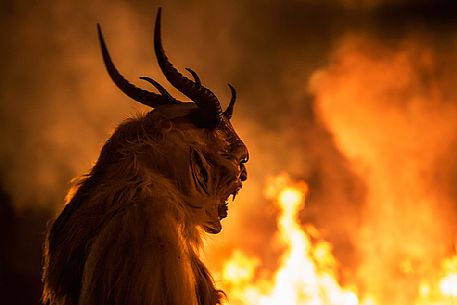
photographer: Anne Maenurm
Bad Santa, meet Krampus: a half-goat, half-demon, horrific beast who literally beats people into being nice and not naughty. Krampus, whose name is derived from the German word krampen, meaning claw, is said to be the son of Hel in Norse mythology. The legendary beast also shares characteristics with other scary, demonic creatures in Greek mythology, including satyrs and fauns, Tarvisio, Italy
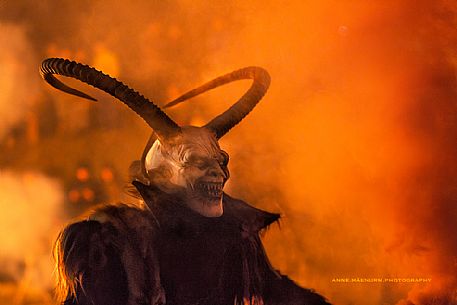
photographer: Anne Maenurm
Bad Santa, meet Krampus: a half-goat, half-demon, horrific beast who literally beats people into being nice and not naughty. Krampus, whose name is derived from the German word krampen, meaning claw, is said to be the son of Hel in Norse mythology. The legendary beast also shares characteristics with other scary, demonic creatures in Greek mythology, including satyrs and fauns, Tarvisio, Italy
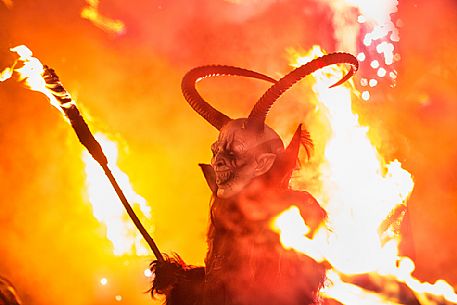
photographer: Anne Maenurm
Bad Santa, meet Krampus: a half-goat, half-demon, horrific beast who literally beats people into being nice and not naughty. Krampus, whose name is derived from the German word krampen, meaning claw, is said to be the son of Hel in Norse mythology. The legendary beast also shares characteristics with other scary, demonic creatures in Greek mythology, including satyrs and fauns, Tarvisio, Italy
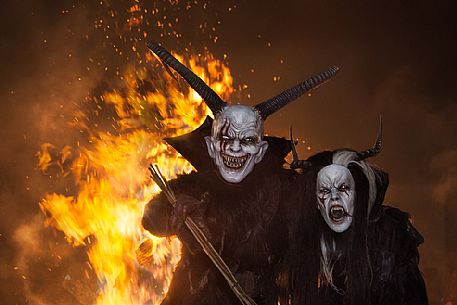
photographer: Anne Maenurm
Bad Santa, meet Krampus: a half-goat, half-demon, horrific beast who literally beats people into being nice and not naughty. Krampus, whose name is derived from the German word krampen, meaning claw, is said to be the son of Hel in Norse mythology. The legendary beast also shares characteristics with other scary, demonic creatures in Greek mythology, including satyrs and fauns, Tarvisio, Italy
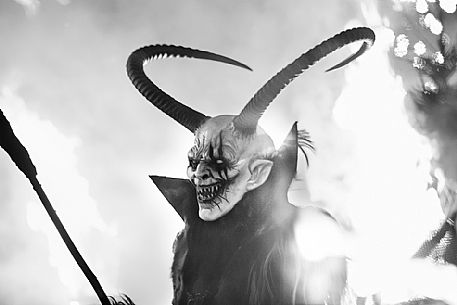
photographer: Anne Maenurm
Bad Santa, meet Krampus: a half-goat, half-demon, horrific beast who literally beats people into being nice and not naughty. Krampus, whose name is derived from the German word krampen, meaning claw, is said to be the son of Hel in Norse mythology. The legendary beast also shares characteristics with other scary, demonic creatures in Greek mythology, including satyrs and fauns, Tarvisio, Italy
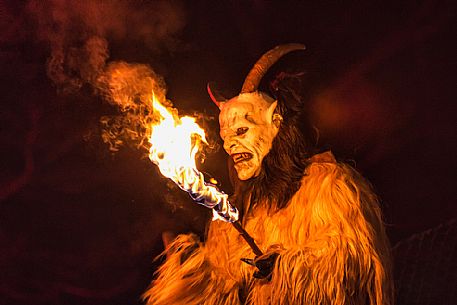
photographer: Anne Maenurm
Bad Santa, meet Krampus: a half-goat, half-demon, horrific beast who literally beats people into being nice and not naughty. Krampus, whose name is derived from the German word krampen, meaning claw, is said to be the son of Hel in Norse mythology. The legendary beast also shares characteristics with other scary, demonic creatures in Greek mythology, including satyrs and fauns, Tarvisio, Italy
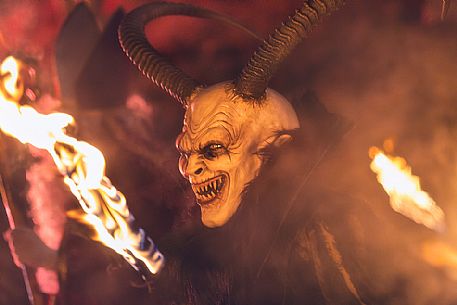
photographer: Anne Maenurm
Bad Santa, meet Krampus: a half-goat, half-demon, horrific beast who literally beats people into being nice and not naughty. Krampus, whose name is derived from the German word krampen, meaning claw, is said to be the son of Hel in Norse mythology. The legendary beast also shares characteristics with other scary, demonic creatures in Greek mythology, including satyrs and fauns, Tarvisio, Italy
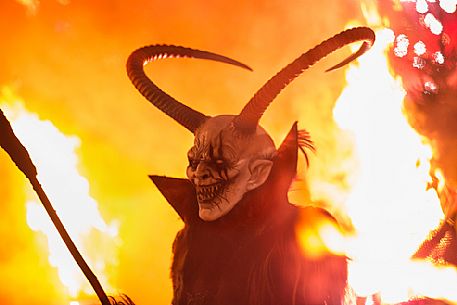
photographer: Anne Maenurm
Bad Santa, meet Krampus: a half-goat, half-demon, horrific beast who literally beats people into being nice and not naughty. Krampus, whose name is derived from the German word krampen, meaning claw, is said to be the son of Hel in Norse mythology. The legendary beast also shares characteristics with other scary, demonic creatures in Greek mythology, including satyrs and fauns,Tarvisio, Italy
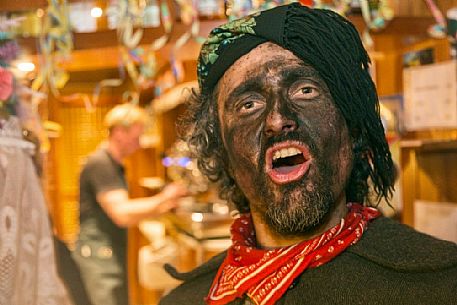
photographer: Luciano Gaudenzio
Some moments of Sauris Carnival with one the most important masks: the Rölar. Sauris di Sotto.
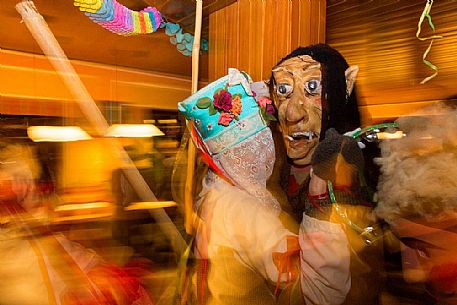
photographer: Luciano Gaudenzio
Some moments of Sauris Carnival with one the most important masks: the Rölar. Sauris di Sotto.
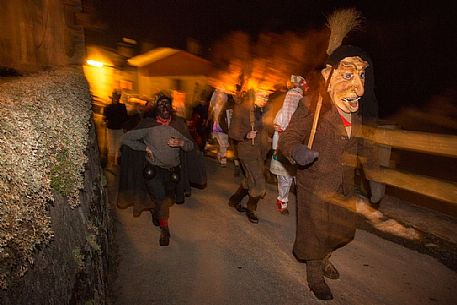
photographer: Luciano Gaudenzio
Some moments of Sauris Carnival with the most important masks: the Rölar and Kheirar. Sauris di Sotto.
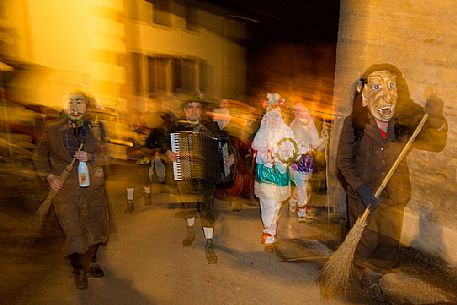
photographer: Luciano Gaudenzio
Some moments of Sauris Carnival with the most important masks: the Rölar and Kheirar. Sauris di Sotto.
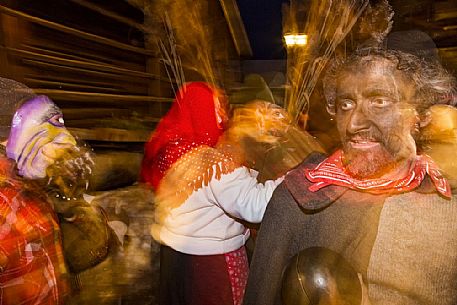
photographer: Luciano Gaudenzio
Some moments of Sauris Carnival with one the most important masks: the Rölar. Sauris di Sotto.
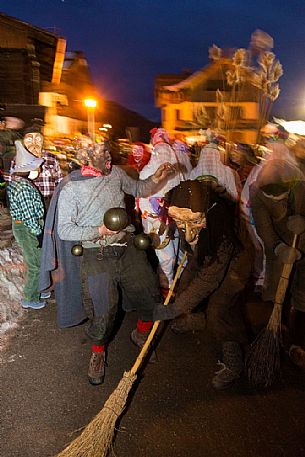
photographer: Luciano Gaudenzio
Some moments of Sauris Carnival with the most important masks: the Rölar and Kheirar. Sauris di Sotto.
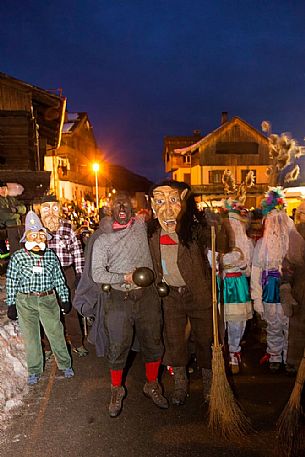
photographer: Luciano Gaudenzio
Some moments of Sauris Carnival with the most important masks: the Rölar and Kheirar. Sauris di Sotto.
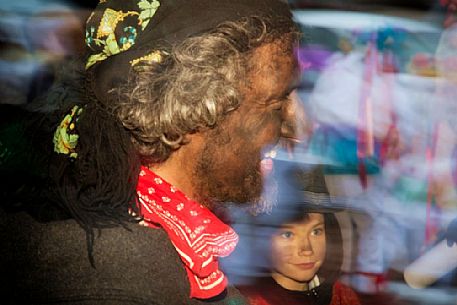
photographer: Luciano Gaudenzio
Some moments of Sauris Carnival with one the most important masks: the Rölar. Sauris di Sotto.
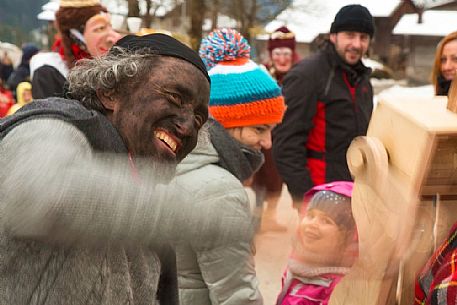
photographer: Luciano Gaudenzio
Some moments of Sauris Carnival with one the most important masks: the Rölar. Sauris di Sotto.
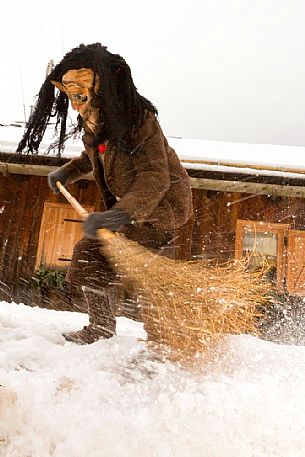
photographer: Luciano Gaudenzio
Some moments of Sauris Carnival with one the most important masks: the Kheirar. Sauris di Sotto.
| evil : Images found 62 | Go to Page Next |


